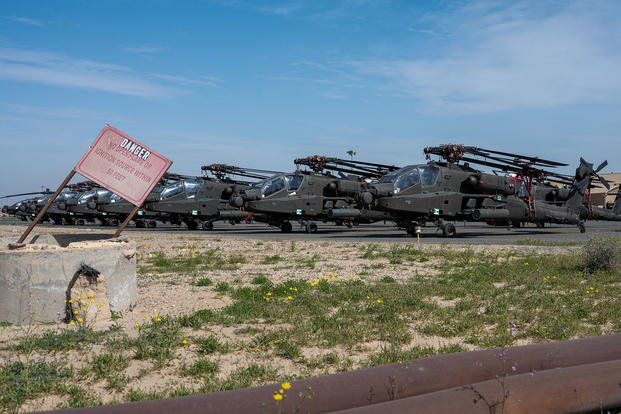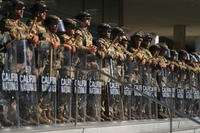The Army National Guard has temporarily grounded all of its helicopters after back-to-back AH-64 Apache helicopter crashes this month, one of which was fatal for the two pilots.
Last week, an Apache crashed in northern Mississippi, killing its two-soldier crew. In a separate incident Feb. 12, there was another Apache crash near Salt Lake City, Utah. Both pilots survived, a rarity in rotary-wing aircraft crashes.
"We are a combat force with helicopters training or on mission worldwide every day," Lt. Gen. Jon Jensen, director of the Army National Guard, said in a statement Tuesday. "Safety is always at the top of our minds. We will stand down to ensure our crews are prepared as well as possible for whatever they're asked to do."
Read Next: Airman Who Set Himself on Fire Outside Israeli Embassy Was Cyber Specialist from Fort Meade
The news comes after a series of helicopter mishaps across most of the services, highlighting mounting concerns over the basic safety of rotary craft -- including how those platforms are maintained and training procedures for pilots.
In the National Guard, pilots fly significantly less than is considered optimal. Between 2017 and 2019, the bulk of Guard pilots flew about five hours per month when about seven is the bare minimum and nine is considered optimal, according to a report from the Government Accountability Office.
The stand-down is to "review safety policies and procedures," according to a press release from the service component. The grounding echoes a stand-down less than a year ago, when in April the service grounded all its aircraft following a March mid-air collision of two Black Hawk helicopters that killed nine soldiers based out of Fort Campbell, Kentucky.
The two Guardsmen killed in Friday's crash in Mississippi were both experienced pilots. Chief Warrant Officer 4 Bryan Andrew Zemek, 36, was in Alpha Company, 1st Battalion, 149th Aviation Regiment, and Chief Warrant Officer 4 Derek Joshua Abbott, 42, was in Delta Company, 2nd Battalion, 151st Lakota Medical Evacuation unit.
The National Guard makes up much of the U.S. airpower overseas in combat zones and in Europe as NATO is bolstering its front line amid the ongoing war in Ukraine.
The Guard also heavily relies on its rotary fleet for search-and-rescue missions as well as disaster relief, though safety stand-downs often do not include grounding craft used for emergencies or critical combat operations, and are generally intended to pause routine training missions.
Some 45,000 Guardsmen are currently deployed abroad and on domestic missions.
Related: All 5 Marines Aboard Downed Helicopter in California Were Killed in Crash, Service Says














